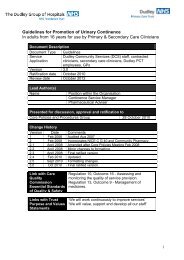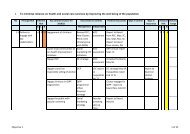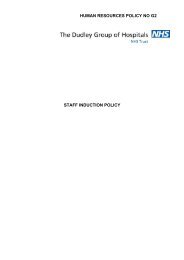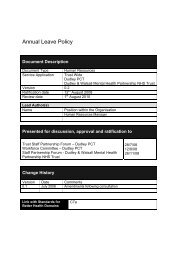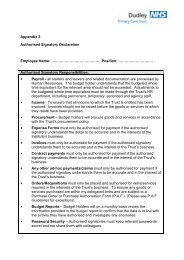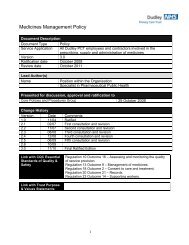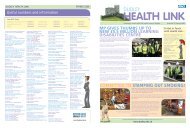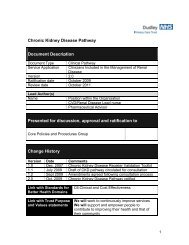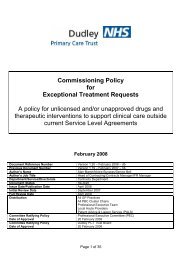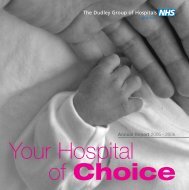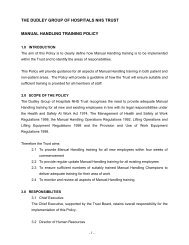Dudley Strategy for Tackling Health Inequalities 2010-15
Dudley Strategy for Tackling Health Inequalities 2010-15
Dudley Strategy for Tackling Health Inequalities 2010-15
- No tags were found...
Create successful ePaper yourself
Turn your PDF publications into a flip-book with our unique Google optimized e-Paper software.
That an increase in access to diagnostics and revascularisation <strong>for</strong> acute MIresulting from the opening of the tertiary PPCI service and general capacityimprovements within secondary care has improved the equity of access andnarrowed inequalities over the last five years. Some factors besides actual needare still an influence.That there are significant differences in referral to cardiac rehabilitation by age,diagnostic group, ethnicity, gender and employment status that needs to beinvestigatedRecommendations <strong>for</strong> Acute CHDThe NST identifies a number of priority areas <strong>for</strong> action and this section draws onthose in conjunction with the main findings from this health needs assessment:Introduce public awareness campaigns with a targeted approach to groups withhigher needs; over 65s, BME, women and deprived areas. <strong>Health</strong> careprofessionals should take every opportunity to advise all patients with, or at highrisk of, vascular disease to call 999 should they experience unexplained chestpain.Continue to embed delivery of expanded services <strong>for</strong> acute MI diagnostics andrevascularisation and review the equity of provision in a further 5 years time.Investigate reasons <strong>for</strong> „no procedures‟ being undertaken with the PPCI serviceRepeat the cardiac rehabilitation equity audit with larger numbers to establish afuller picture and implement recommendations made from this. This shouldinclude a review of DNAs and DNRs <strong>for</strong> cardiac rehabilitation and theestablishment of routine procedure to follow-up these groups.Transient Ischemic Attack (TIA) and StrokeUntil fairly recently society has been fatalistic about stroke seeing it as an inevitabilityof aging. However medical and technological advances have trans<strong>for</strong>med ourunderstanding of the brain and the treatments available <strong>for</strong> restoring blood flow andimproving brain function when areas of the brain get damaged. It is now recognizedthat time is critical – the faster someone reaches expert help, the greater theirchances of making a full recovery.The National Stroke <strong>Strategy</strong> (Great Britain. Department of <strong>Health</strong>, 2007a) waspublished with a view to introduce a comprehensive revolution of stroke services withthe implementation of rapid response systems that get people to centres of expertisequickly, directly to the scan they need and onwards to appropriate treatment andcare. Key priorities within the stroke strategy include:the need to speed up access to diagnostic scanning/imaging <strong>for</strong> TIAthe need to ensure stroke is treated as a medical emergency (hyper acutestroke) with access to diagnostics and thrombolysis within an appropriatetimeframe. „Time means brain‟.improving rehabilitation and long term careThe stroke strategy was followed by the Accelerating Progress in Stroke CareImprovement Programme in March <strong>2010</strong> which set a number of national indicators<strong>for</strong> stroke and TIA care with targets <strong>for</strong> achievement by April 2011 (Figure 11) to83




